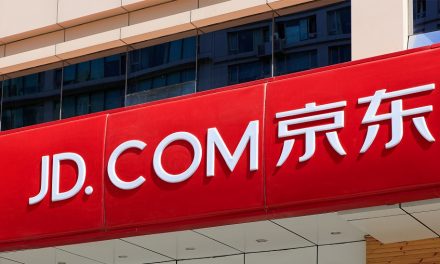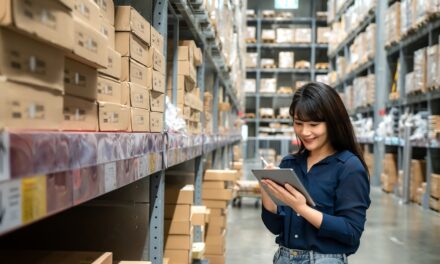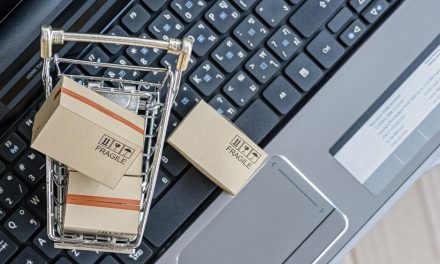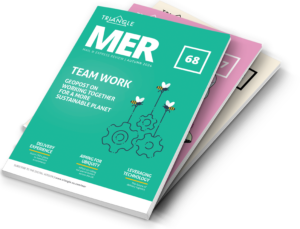
Driving PUDO adoption

Post & Parcel speaks to Mike Richmond, Chief Revenue Officer at Doddle about the UK parcel locker market, how returns should be more personalised and why the delivery sector is in the perfect position to drive the change towards more sustainable delivery.
What does sustainable delivery look like to you?
Doddle’s vision is to create more sustainable delivery options and this is something I am really passionate about. – I use sustainable in both senses of the word, sustainable ecologically, and sustainable in the sense of making good business sense and driving profit. That is why Doddle was founded back in 2014 – to try to improve the overall efficiency in delivery at the same time as creating a better delivery and returns experience for consumers.
More specifically in the context of PUDO, or out-of-home delivery, the logic of delivering multiple parcels to one easily accessible location just makes sense. The ‘final mile’ is usually agreed to make up something like 30-40% of the cost of delivery, and we’re effectively shortening it with out-of-home deliveries.
If you consider how densely populated our urban areas are going to be in the next 10 years, and the projected growth of parcel volumes in those urban areas, you would probably not design the infrastructure to assume all individual parcels are delivered to people’s front doors. If customers can alter their habits and pick up their deliveries, then it is possible to make delivery much more sustainable, in both senses of the word.
How can we encourage consumers to contribute to the final mile?
The biggest challenge we face as a business extolling the virtues of PUDO is one of consumer inertia. Consumers, by nature, are creatures of habit. They do what they have always done, and are reluctant to change. So the key thing, in our experience, is getting them to break that behaviour and try something new when it comes to delivery. To give a great example, Amazon offered customers a £5 discount on an item’s order value if they chose to have it shipped to a parcel locker. That seems excessively generous in the context of that individual order, but Amazon – the world’s best e–commerce exponent – know that once consumers have tried a locker, they understand its benefits and they will be significantly more likely to use that service again.
At Doddle, we have seen that once a consumer uses PUDO more than once in a year, the average number of times they will use it is >13, which reinforces the same point.
In an article you wrote for MER last year, you quoted research from Sendcloud on sustainability, where 62% of shoppers said they’d be willing to use alternatives to home delivery if retailers provided emissions data at the checkout. In your opinion do you think the price of delivery deters customers from ‘doing the right thing?’?
There is always a disconnect between what consumers say they will do and what they actually do. When asked the question: do you want a more sustainable delivery option, people will of course say yes. But when it comes to personal decision making, sadly, we’re a selfish bunch, and often we do exactly what we want in the moment, usually for the lowest cost rather than paying a bit more for the broader or longer-term benefit.
However, as that research I cited before suggests, another massive challenge is the lack of clearly signalled information at the point a consumer is making a decision. Shoppers aren’t confronted with the reality of the impact of their decision. If consumers were told that a next-day delivery had a carbon cost of Xkg of CO2e versus a significantly reduced CO2e number for a 3-day delivery, I think that would change people’s behaviour. And the same runs true for PUDO versus home delivery where consumers are picking up that item from the PUDO in a low emissions way. Either way, though, price will always be a massive factor in driving and changing consumer behaviour.
How is Doddle aiming to address this?
When PUDO is operating efficiently at scale, a PUDO option should be cheaper to consumers than home delivery. That is clear from the more mature PUDO markets of France, Poland, the Nordics and Eastern Europe. It’s also basic economics. PUDO is a B2B delivery and allows for consolidation; home delivery is fundamentally a B2C model.
At Doddle, we’re working with parcel carriers to set up and grow PUDO networks, and crucially we’re also helping drive awareness and adoption of those PUDO networks in the eyes of merchants and consumers. One of the ways we do this is by making a carrier’s PUDO locations available on merchant checkouts so they are visible to the maximum number of shoppers. When you do that, awareness will, in time, turn to adoption, and carriers can start to realise the benefits of all that consolidation. Getting more technical – we push our carrier partners to promote checkout decision making rather than allowing a customer to divert an item in-flight, or using a PUDO for a failed delivery, as early decision making allows for optimal operational efficiency.
In one of Doddle’s webinars Elena Fernández Rodríguez, Deputy Director of International Affairs & Sustainability at Correos, said we need to switch from a ‘customer-centric’ approach to a ‘planet-centric’ approach – how viable is this?
I think Elena is a visionary. She is shouting from the rooftops and saying: “The sector needs to move faster,” but a lot of businesses aren’t strategically there yet. Someone has to kickstart this movement and in my opinion, the party with the biggest incentive here is the parcel carrier.
In a typical e-commerce ecosystem you’ve got merchants, carriers and consumers, but in the PUDO ecosystem you also have the 4th party, which is the PUDO network / host – typically a shop, locker or a post office where the item is picked up from. Any of these parties could massively drive the change towards more sustainable delivery, but I think the party with the most to gain, and who needs to focus on this the most, is the parcel carrier. If you read any of the latest sustainability reports from companies such as DPD, Post Nord or Royal Mail they are spending millions and millions of pounds electrifying fleet, changing the way their buildings operate and looking at how their employees get to work. But by driving up PUDO adoption they can materially reduce their miles/delivery, and therefore significantly cut carbon emissions.
Which country has utilised parcel lockers successfully?
Poland is the ultimate case study for out-of-home delivery. According to InPost, OOH (i.e. both parcelshops and lockers) represented about 15% of all Polish parcel deliveries in 2015. By 2020, that number was estimated to have grown to 45% of all parcels, and that is in an e–commerce market that grew nearly 4x over the same period. Talking about lockers specifically, locker volume throughout Poland grew from 18m parcels in 2015 to an estimated 240m parcels in 2020.
There are lots of factors explaining how this was achieved but it’s largely down to brilliant vision and execution by InPost, the leading locker player in that market. InPost offer delivery to locker at a 20-25% discount to home delivery, and clearly publicise the service as a low emission, low-cost delivery option. Not only that, they also have definitive proof of customer satisfaction as their NPS for locker delivery is 66 versus 14 for home delivery.
How far away are we from this scenario in the UK?
We have still got a lot of catching up to do. I think the UK is a difficult environment for parcel lockers because it has such a competitive carrier market. There are lots of national carriers in the UK competing for volume and they have created their own networks, almost all operating independently. I think things are changing – driven by InPost’s acceleration in the UK, the ‘opening up’ of the Post Office, and the recent launch of Parcel Pending by Quadient – but it will take time to change the landscape.
Are parcel lockers for everyone?
There is a base of consumers who are not going to use lockers because either they do not believe in the technology or because home delivery to their doorstep is so convenient and they are not given any reason (price or otherwise) to change that behaviour. However, there is also a large body of consumers who, when they are encouraged to try using a parcel locker or a parcel shop will use it again and again. If you ever use a locker for pickup, it is generally amazing and there is a psychological benefit of being in ‘control’ of your parcel that we’ve not yet tapped into as a sector.
As people are returning to stores and e-commerce volumes drop due to the increase living cost, is the momentum for expanding parcel lockers still there and are we going to end up with lots of unused parcel lockers?
It is a real problem and it is going to test the resolve and patience of many parcel carriers looking to expand networks. However, if lockers are a more efficient delivery option, then there’s an argument that the current downturn should drive an acceleration in locker deployment rather than a slow-down.
We have had so much growth in e-commerce over the last 20 years that the current downturn is challenging a lot of the previously well-established assumptions – i.e. you have to offer free delivery or free returns – and that’s prompting some searching questions about some of the core assumptions around how e–commerce should work.
Are paid for returns the answer to the returns crisis?
In the past year, the slowing of growth in e-commerce together with the bounce-back of high returns rates (which had temporarily reduced dramatically during the various lockdowns) has caused a real re-examination of returns processes. This has led to some leading e-tailers such as Zara and boohoo to move to a paid-for returns model.
For me, this is a logical first step, but having a blanket policy of charging or not charging for returns is a pretty blunt tool to solve a much more complex challenge. For example, every day that an item that is to be returned stays in a consumer’s house results in a loss in value – we call this the ‘bottom step problem’, i.e. how long do people leave the return on the bottom step of the stairs. This would make you think merchants should be encouraging fast returns, so they can resell items quickly, but they aren’t doing that now. Alternatively, we should be looking at how we prioritise returns of expensive goods, which shouldn’t be treated the same as returns of low-cost items, particularly so if the low-cost item is only going to be destroyed once returned.
I just feel we are so unsophisticated with how we deal with returns and this is a global problem. There is analysis being done in this area to see a better way forward but there is still a long, long way to go. It’s something we’re helping a number of leading merchants and carriers with, in a number of markets around the world.
How could the delivery industry be smarter?
As an industry, merchants and carriers are still hugely inefficient in how they look at consumer behaviour, and what consumer behaviour in delivery and returns could do to overall profitability of e-commerce.
If you think about online checkouts, they broadly look the same as they did 10 years ago – you’re still typically offered one or two delivery options. As a consumer you certainly don’t see dynamic and personalised delivery options, and you don’t see carriers making the most of the huge amounts of data they see from across their merchants. If a sizable carrier can start to make something of the information they have regarding what type of shopper is buying which type of item at X time of day in Y part of the country after being offered, e.g. free delivery – the possibilities of mining that data for usable insights for merchants are endless. That’s the anonymised, macro-level data opportunity. At the other end of the scale is the personalisation piece, building a unique profile for the delivery preferences and habits of consignees to make that experience relevant every time on every checkout, rather than the baked-in one or two options we get today.
What is the future for Doddle?
Doddle’s operates today in Australia, Japan, the US and the UK. Our aim is to grow across Europe and South East Asia. We are in detailed discussions with some great postal operators and parcel carriers in those markets and we’ll look to continue to expand our product set. We’ve become known as a business that focuses on PUDO and returns. But, as we deal with more partners in more markets, the chance to work in the cross-border e-commerce space will open up more opportunities.
About Mike Richmond
Mike is responsible for global sales and revenue at Doddle, and is currently helping posts and carriers make e–commerce work better with out-of-home delivery and returns technology.











